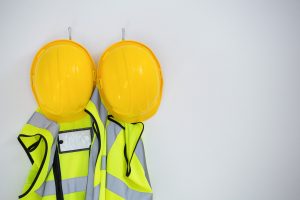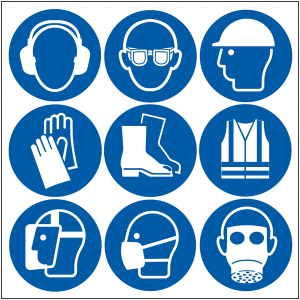The Personal Protective Equipment at Work (Protected Characteristics) Bill, a Bill to require employers to ensure that personal protective equipment (PPE) provided at work to people with certain protected characteristics within the meaning of the Equality Act 2010 is suitable for the wearer and for connected purposes, has been tabled in Parliament.
The Bill will put the onus on employers to ensure PPE provided to people with certain protected characteristics is suitable for their needs.
Introducing the Bill, Labour MP Emma Hardy (Kingston upon Hull West and Hessle) said that current PPE regulations do not make any specific mention of women. She told the Commons: “This omission is one which continues to have significant real-world consequences. The world is finally waking up to the fact that women are not just smaller men.”
Hardy noted that “reference to the Equalities Act can be found in guidance surrounding the regulations, but it’s not statutory. Well-fitting PPE should not be seen as best practice, it should be the minimum standard”.
While most distributors stock women’s PPE, she added: “The issue can sometimes lie with employers, despite it being readily available on the market.”
Ill-fitting PPE has been found to cause a range of health and safety issues which included increased slip, trips and falls, increased risk of entanglement, limited range of motion, decreased dexterity from gloves and impaired vision from safety glasses.
“Worryingly, 42% of women reported experiences of relating to ill-fitting PPE which has impacted their careers and long-term health problems,” Hardy added.
The Bill has received widespread industry support and is expected to progress to the second reading on 7 June 2024.
I have a personal interest in this topic. Feel free to read my article on PPE.
Contact us if you wish to find out more.
 Having worked in health and safety since 2004, I understand the vital role that PPE plays in keeping us safe. However, as someone who is 5 feet tall, I have encountered challenges with ill-fitting equipment and clothing that can impact both safety and productivity.
Having worked in health and safety since 2004, I understand the vital role that PPE plays in keeping us safe. However, as someone who is 5 feet tall, I have encountered challenges with ill-fitting equipment and clothing that can impact both safety and productivity.
Changes are being made to accommodate people of all shapes and sizes so that they are safe and can be seen in the workplace.
Katy Robinson is a PPE campaigner, she spoke to SHP Magazine about raising awareness for inclusive PPE, click here to read her article.
I was asked to write an article for them too. My article can be read here.
If you want to find out more or need help in finding PPE that fits, please contact me.
Health and Safety Consultants | Telford, Shropshire, West Midlands (walkersafety.co.uk)

PPE regulations to change from April 2022
The HSE has released new regulations around the use of personal protective equipment (PPE) at work.
The new guidance is set to amend the 1992 regulations and will include specific Covid-19 guidance for workplaces.
The new PPE regulations PPER 2022 will remain unchanged in some areas from the 1992 regulations, but will now extend to Limb (b) workers (contractors, agency workers etc) who did not previously come under the 1992 regulations.
Covid has changed the way we work forever. Previous blog regarding PPE and COVID, click here. This guidance from the HSE to include Limb (b) workers, is an example of the types of strategies needed in order to safeguard anyone on your site.
If you are an employer, you will need to familiarise yourself with the new regulations before 6th April 2022.
The PPE 2022 regulations places a duty on employers to provide necessary and essential PPE for both permanent and casual workers/contractors. Essentially anyone working on your site needs to be provided with the correct PPE for the job.
PPE risk assessments for all casual workers may place a small burden on employers. But the benefits of ensuring all site workers are properly equipped far outweigh the negatives. See it as a belts and braces approach to safety, which then covers all of your workforce and not just some.
We all have to play a part in ensuring that we minimise the spread of viruses that are potentially fatal. That means that prior to any new workers starting, each person must have a risk assessment and provided with the right PPE to safeguard their health and minimise accidents at work.
PPE has changed a lot since the beginning of the pandemic. Workers are now demanding they are provided with the right equipment, which is now backed up by the new HSE regulations.
Depending on the nature of the work being performed, there are various types of ‘suitable’ PPE for workers. In some cases face masks are essential, but the level of protection afforded by each mask can be quite different. The best thing to do before buying any new PPE is to risk assess so that you buy the right face masks for the job. Last year we produced a blog post which discussed the various types of masks available and which one might be best for the job which might be beneficial when you are doing your research.
But of course PPE is never just face masks. To shop our collection of PPE including safety hats, goggles and more, click here to be taken straight to the PPE section of our shop.
Contact us for further information.
Guest Post William Dooley.

Importance of Updated Safety in the Workplace
Safety in the workplace is essential. Part of safety protocol entails inspecting and replacing any damaged equipment. Personal protective equipment (PPE) applies to any industry. It’s helpful to know what PPE your team should wear as well as the stationary equipment available to keep everyone safe.
Why Is it Important to Inspect for Damage and Replace Equipment?
There are several factors to consider when inspecting damaged equipment and replacing it. Dangerous and risky job sites require that personal protective equipment, like helmets, must always be worn to avoid fatal accidents such as falling objects. All PPE must be working correctly and replaced regularly.
Inspect and Replace PPE in a Timely Manner.
Identify the correct time to replace PPE. Replacing equipment too early is a waste of resources to pay for new equipment. However, waiting too long to replace PPE is risky because, if equipment fails, accidents and injuries happen.
Develop Standards and Protocols for Inspecting PPE.
Establish inspection timelines, standards and protocols. For example, everyone could be responsible for their personal protective equipment, or one or two people could be assigned responsibility for inspecting the equipment. If and when there is an issue with the equipment, it should immediately be taken out of circulation and replaced. Therefore, you should always have extra PPE on hand.
When creating inspection protocols, you need to be aware of what to look for when inspecting PPE. Some examples of what to inspect include:
Use a PPE Grading System.
Create a PPE grading system. A grading system should be common to everyone and helps your employees instantly know when equipment should be replaced. PPE may need to be replaced while it’s getting fixed or may need to be thrown out altogether. It all depends on the type of job.
Use Occupational Safety and Health Administration Guidelines.
Refer to The Health and Safety Executive (HSE) and Government guidelines. Be sure that your team knows exactly what the guidelines are and be sure they are met at all times. These guidelines can be included in your inspection and replacement requirements.
COVID and PPE
When managing the risk of COVID-19, additional PPE beyond what you usually wear may not be beneficial. This is because COVID-19 is a different type of risk to the risks you normally face in a workplace, and needs to be managed through social distancing, hygiene and fixed teams or partnering, not through the use of PPE.
The UK Government has published COVID-19 Secure working safely guidance for workplaces that provides a hierarchy of risk control measures that employers and the self-employed are expected to follow when reviewing their risk assessments for COVID-19 hazards.
When an Incident Occurs, Take Action Immediately.
Take action after an incident. Any affected PPE should always be replaced. Depending on the incident, it may be possible to save the gear after being inspected. Otherwise, it should be replaced.
Don’t Forget About Stationary Equipment
Be aware of stationary equipment like machinery and the need to stand behind a protective shield. This equipment also requires you to inspect, repair, and/or replace the stationary equipment as well.
Be Consistent.
Though replacing and inspecting equipment may seem like a hassle, it is better to be safe than sorry. Make sure your workers are aware of necessary PPE and inspect their gear at the beginning of a shift or before starting a major project. You do not want to risk an accident.
What PPE Wear Is Available?
PPE wear includes head protection, eye protection, hearing protection, good respiratory protection, correct gloves, footwear, and correct work clothing.
Here are examples of the different types of PPE wear available.
Head Protection
Invest in a good helmet. Today, there are many customised features to choose from such as adjustable interior harnesses and sweatbands. Ensure PPE is compatible, for example, wearing a safety hat in conjunction with ear defenders.
Eye Protection
Work-related eye injuries unfortunately happen to hundreds of people daily worldwide. Safety glasses can prevent these injuries. Welding goggles and shields can protect you from bright light or infrared radiation.
Hearing Protection
In a high sound level environment, earplugs would be comfortable. However, ear defenders may be a better choice to have on the shop floor or construction site because you can take them on and off easily and they’re more hygienic.
Respiratory Protection
Masks are necessary when coming in contact with hazardous materials like vapour, smoke, or powder. Dust masks protect you against fine dust and other dangerous particles. Full-face masks protect you against toxic materials. These masks will protect your nose and mouth from pollution.
Hand Protection
There are different types of gloves depending on your occupation.
Protective Footwear
Different types of protective footwear serve different purposes
Correct Work Clothing
Specific types of work clothing can protect against accidents in a crowded workshop. High-visibility vests or jackets can keep you visible in dark or crowded conditions. Pants made with strong fabric will protect your skin and resist wear and tear.
Ensure the team are trained and competent to carry out their tasks.
Safety in every workplace is a must to provide a safe work environment, and keep you and your team safe.
Contact us for further information.
Accidents can happen on any day. The day they are most likely to happen is the day health and safety have been forgotten. Health and safety can’t have days off!
By starting each day with a quick 5-10 minute toolbox talk, it serves as a reminder about the importance of health and safety at work. It gets peoples minds focused on the hazards and risks they are about to face. It reminds them of what they need to do to stay safe. It starts the day with a positive health and safety attitude.
Informal toolbox talks can often be missed or carried out too infrequently. The benefit of a daily toolbox is that it becomes part of a routine. Part of the working day.
Carried out daily, toolbox talks become part of a habit. A habit that will help the team develop a positive health and safety attitude. A habit that creates a safer work environment.
What business doesn’t want a positive health and safety culture? It keeps your workers safe, keeps your business out of trouble, and can save you money. That’s a triple win! So why do some businesses have poor health and safety records? Because growing a positive health and safety culture takes time and effort, and everyone’s involvement.
Your health and safety culture is the values, attitudes, competency and behaviours of everyone in the business. Regular toolbox talks can form part of the health and safety management system to grow your health and safety culture in a positive way.
In some instances, dangers arising from hazardous activities can only be controlled using personal protective equipment, known as PPE.
The importance of PPE and how to use it correctly to ensure effective protection.

Personal Protective Equipment Toolbox Talk
The legislation requires any employer who identifies it as necessary to supply PPE and ensure that it is used at work wherever the risk to health and safety cannot be controlled in other ways.
PPE is equipment or clothing designed to protect the user from known hazards in the workplace. The most commonly worn items of PPE are safety footwear, gloves, safety glasses or goggles and hi-vis clothing. You might also use helmets, ear protection (for noise), respirators and safety harnesses.
PPE is designed to only protect the user.
All PPE must be worn in accordance with the manufacturer’s instructions and be in good condition to be fully effective.
Anyone using PPE needs to be aware of why it is needed, when it is to be used, repaired, or replaced. They should also be aware of the limitations of the PPE they use, for example safety gloves can come with different cut levels. A different cut level may be required depending on the risk involved of the task.
Contact us if you have any questions.